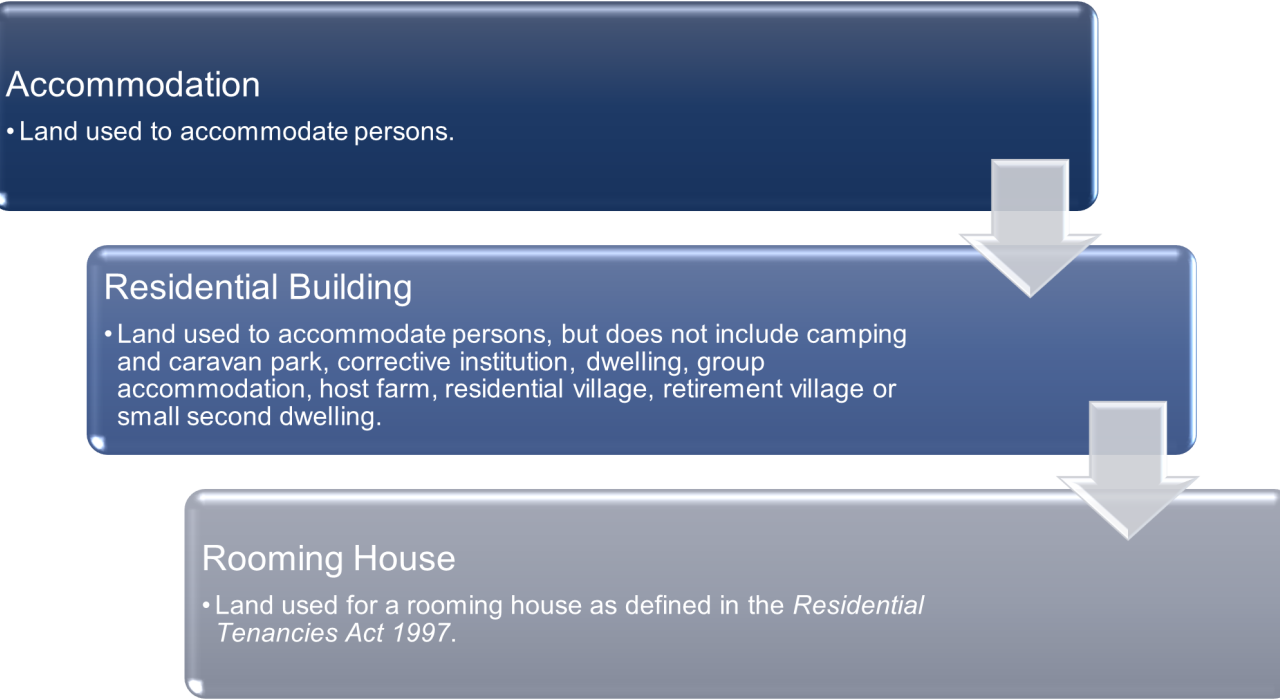Rooming House defined under the Wyndham Planning Scheme
Land use terms can be viewed by members of the public via the following link Clause 73.03.
A Rooming House is defined as follows:

In summary, to be considered a Rooming House under Town Planning, you must:
- Be a building, other than a Specialist Disability Accommodation (SDA) enrolled dwelling, where one or more rooms are available for rent; and
- Accommodate 4 or more people; and
- NOT include a kitchen, bathroom & toilet in a room as it would be deemed self-contained. A room within a rooming house cannot be self-contained.
If you meet the definition (above), your proposal is considered a Rooming House.
A rooming house requires a planning permit for use and development of the land unless you meet specific requirements detailed within Clause 52.23 of the Wyndham Planning Scheme. These requirements are summarised and explained under the ‘Exemptions’ section.
If these requirements are not met, the proposal cannot be considered a rooming house and will be defined as an alternative use such as, a Residential Building under the Wyndham Planning Scheme. The newly defined use will not benefit from the Rooming House exemptions under Clause 52.23 of the Planning Scheme.
Learn more about the difference between a rooming house and residential buildings under the ‘Rooming House versus Residential Building’ section.
Rooming House definition (in full)
A ‘Rooming House’ is nested under ‘Residential Building’ and the broader umbrella of ‘Accommodation’.
A ‘Rooming House’ is defined in the Wyndham Planning Scheme as:
Land used for a rooming house as defined in the Residential Tenancies Act 1997
The Residential Tenancies Act 1997 defines 'Rooming house' as:
a building, other than an SDA enrolled dwelling, in which there is one or more rooms available for occupancy on payment of rent-
(a) in which the total number of people who may occupy those rooms is not less than 4; or
(b) In respect of which a declaration under section 19(2) or (3) is in force.
A ‘Room’ is defined under the Residential Tenancies Act 1997 as:
a room in a building, where the room is occupied or intended to be occupied for the purpose of a residence by a person having a right to occupy the room together with a right to use in common with others any facilities in the building but does not include a self-contained apartment
A ‘Self-contained apartment’ is defined in the Residential Tenancies Act 1997 to mean:
a portion of a building which forms a self-contained residence, including kitchen and bathroom and toilet facilities, under the exclusive possession of the occupier;
Whilst ‘self-contained apartment’ is not a defined land use term in the Scheme, the ordinary meaning of ‘self-contained’ in the Macquarie Dictionary is:
(of a flat or house) having its own kitchen, bathroom and lavatory; not necessitating sharing
‘Kitchen’ is not defined in the Residential Tenancies Act or in the Scheme. The ordinary meaning of ‘kitchen’ as defined in the Macquarie Dictionary is:
a room or place equipped for or appropriated to cooking.
Based on the above definitions, a Rooming House contains rooms that people occupy together with a right to use communal facilities. If a room contains a kitchen, bathroom and toilet facilities then it forms a self-contained apartment and cannot be considered as a room within a Rooming House.
Section 18 of the Residential Tenancies Act defines 'self-contained apartments' in the context of Rooming House Provisions. It reads:
(1) Subject to subsections (2) and (3) (this being the following paragraphs), the rooming house provisions do not apply to a self-contained apartment.
(2) This Act applies to a self-contained apartment in a rooming house as if it were a room in that rooming house if the ratio of rooms to self-contained apartments in the rooming house is not less than 3 rooms for every self-contained apartment.
(3) This Act applies to a self-contained apartment in a building declared to be a rooming house by the Minister under Section 19 (3) as if the self-contained apartment were a room in that rooming house.
Therefore, the Act applies to a self-contained apartment in a rooming house as if it were a room in that rooming house if the ratio of rooms to self-contained apartments in the rooming house is not less than 3 rooms for every self-contained apartment. For example, a nine bedroom rooming house can have a maximum of two self-contained rooms.